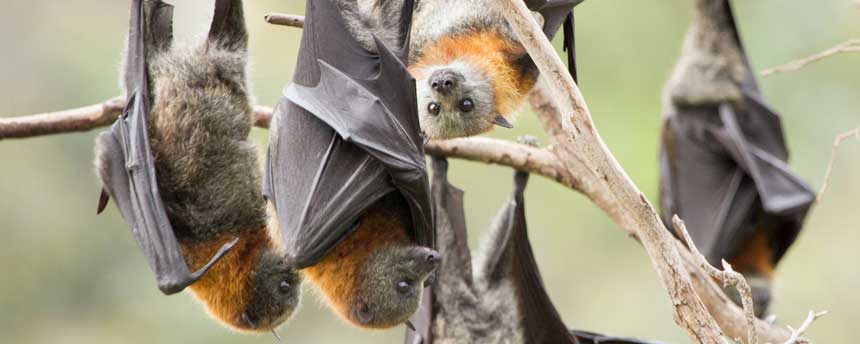The largest pandemic threats come from zoonotic viruses. This week we learned a lot more about one of five viral families — coronaviruses — from a new study.
Coronaviruses cause Severe Acute Respiratory Syndrome (SARS), which emerged in Asia and quickly spread, infecting more than 8,000 people from 37 countries and killing 774, and Middle East Respiratory Syndrome (MERS), which emerged in the Middle East in 2012 and lingers in the region to this day.
Scientists know it’s not a matter of if, but when, similar outbreaks will occur. UC Davis researchers are working proactively with collaborators around the world to identify these viruses and to understand their animal hosts, which often include wild animals. In the case of coronaviruses, it is clear from the recent study that bats are the major reservoir.
Extensive sampling hones our understanding
A collaborative effort between UC Davis' One Health Institute, Columbia University’s Mailman School of Public Health and the PREDICT Consortium revealed that of nearly 20,000 bats, rodents and primates (human and non-human) sampled and tested at high-risk interfaces where animals and people are in close contact, 98 percent of the animals positing for coronaviruses were bats. The study found that the variety of the coronaviruses was linked to the number of bat species and where they are found globally and also that coronaviruses have coevolved with or adapted to preferred bat families. Knowing that bats are the major reservoir for coronaviruses and which bats are more likely to have which types of coronaviruses is extremely valuable because the information can guide future surveillance efforts to increase emergency readiness.
Bats play an extremely important role in the environment

Results of a study like this one should absolutely not, however, be interpreted as a call to cull bat populations, say the study’s co-authors, Dr. Tracey Goldstein of the One Health Institute and Dr. Simon Anthony of the Mailman School. Bats play extremely important roles in the ecosystem, and most of the coronaviruses they carry are not known to be dangerous to humans. Additionally, harming or killing bats may have unintended consequences. It can even result in increasing the risk for disease transmission — because reducing an animal population stimulates new births, in turn creating a new population of susceptible young to which the virus can be transmitted — as seen in other studies, including some of Marburg virus in bats.
How lab work helps
Programs such as the PREDICT Project aim to identify potential viruses in animals before they spillover into people. PREDICT’s approach to global disease surveillance involves the use of consensus PCR in a laboratory to broadly target viral families of pandemic importance in samples from animals and humans. The broad testing is supplemented by genome sequencing to better characterize and study the viruses, including coronaviruses, to understand if they could infect humans.
For more on the PREDICT Project, follow along on Twitter.
This post is adapted from the original news story, published on the One Health Institute website.
Justin Cox is content marketing manager for the UC Davis One Health Institute and the Karen C. Drayer Wildlife Health Center.